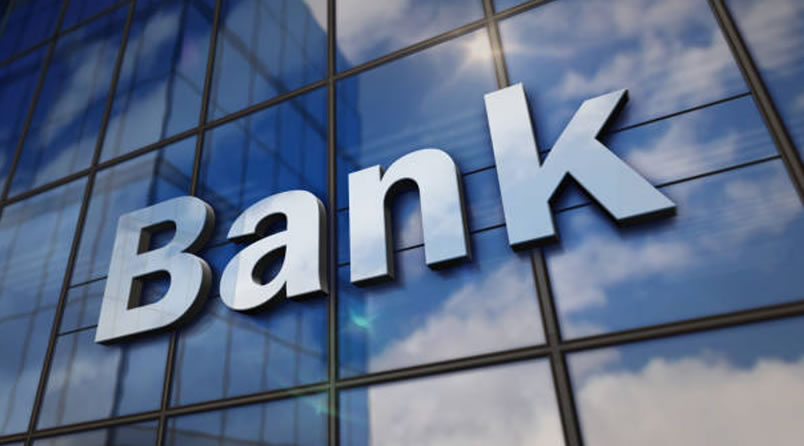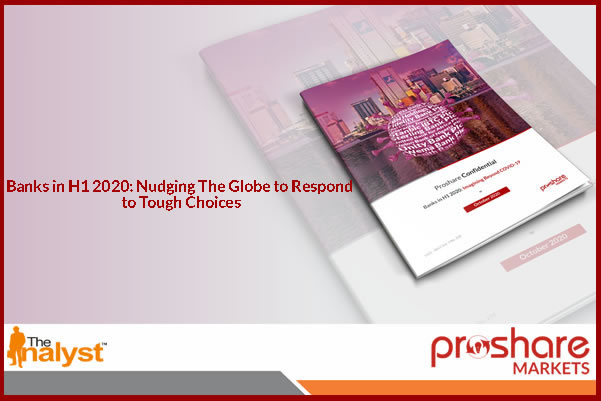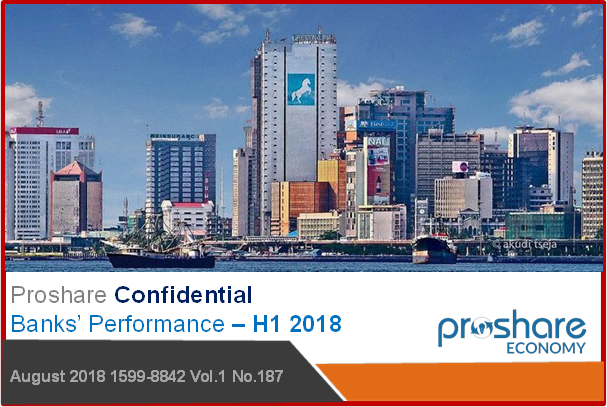Which Sectors are Nigerian Banks’ Lending to?
FBNH
FBNH in 2020 channeled 17.7% of total loans and advances to the Manufacturing sector. The Oil and Gas sector was provided with 25% of the loans and advances of the bank. When further analyzed, the upstream oil and gas sector got 17.3% of total loans while the downstream sector obtained 9% of the total loans. The ICT sector obtained about 5% of total loans. The lender’s loans to the Manufacturing sector rose from 17.7% of total loans and advances in 2020 to 19.30% in H1 2021. Nevertheless, as of H1 2021, the oil and gas sector remained the sector with the largest funding with 34.5% of FBNH’s loans (see chart 25 below).
Chart 25: FBNH’s Loan Book Diversity 2020 – 2021 (%)
UBA
In 2020, UBA advanced 19% of its loans to the Oil and Gas sector. ICT, a fast-growing sector only managed to obtain 6% of the lender’s loans and advances. Meanwhile, 12% of the bank’s lending in the period was directed to Manufacturers. By 2021, UBA’s loan book had the same proportion (19%) committed to funding the Oil and Gas sector, while loan exposure to the Manufacturing sector reduced from 12% to 9% of total loans (see chart 26 below).
Chart 26: UBA’s Loan Book Diversity 2020 - 2021 (%)
GTCO
Like other top banks, 30% of GTB’s loan book in 2020 was committed to funding business in the Oil and Gas sector. This proportion fell marginally to 28% in 2021, while the portion of total loans and advances to the high-growth Information, Telecoms and Transport sectors increased from 1% in 2020 to 7% in 2021. The lender’s advances to the Manufacturing sector however decreased in the period from 19% in 2020 to 14% in 2021 (see chart 27 below).
Chart 27: GTB’s Loan Book Diversity 2020 & 2021 (%)
Access Bank
Over 25% of Access bank’s lending as of FY2020 was to the Oil and Gas sector, while the Manufacturing sector only got 7.7% of total loans. A look at the loan book at the end of 2021 reveals that the exposure to the Oil and Gas sector had moderated slightly to about 23% while the proportion of total lending to Manufacturing also dropped to 6.7% (see chart 28 below).
Chart 28: Access Bank’s Loan Book Diversity 2020 & 2021 (%)
Zenith Bank
A quarter of Zenith Bank’s loan exposure in 2020 was to the Oil and Gas Sector, Manufacturing sector obtained about 14% of the total loans advanced as of the end of 2020. Meanwhile, 6.2% of the bank’s lending was directed to the Agricultural sector. At the end of 2021, the Bank’s loan book shows that the bank had reduced its exposure to the Oil and Gas Sector to 23% while increasing lending to the Manufacturing sector to close to 17% of the bank’s loan book. Lending to Agriculture also rose to 6.5% (see chart 29 below).
Chart 29: Zenith Bank’s Loan Book Diversity 2020 & 2021 (%)
ETI
A look at the loan book of ETI in 2020 reveals that up to 18% of the bank’s lending exposure was to the Oil and Gas Sector, in terms of size of exposure, the next highest lending was to the Manufacturing sector (12%). About 9% of the bank’s lending was channeled to General commerce. The lending pattern remained the same in 2021, with the exposure to the Oil and Gas sector only reducing slightly to 17% while the proportion of lending to Manufacturing and Agriculture remained the same (see chart 30 below).
Chart 30: ETI’s Loan Book Diversity 2020 & 2021 (%)
Finding The Compass Bearing for Nigerian Tier 1 Banks
- Structure & Macroeconomic indicators
According to the World Bank, Nigeria is a lower-Middle Income country and although the non-oil sector contributes about 90% of the country’s GDP, the oil and gas sector, accounts for over 95% of export earnings and nearly 85% of government income. As is the case with developing economies, Nigeria’s Manufacturing sector contributes a meagre fraction of the country’s GDP, making it largely import-dependent on manufactured items including refined oil and other petroleum products.
Meanwhile, the services sector has on average contributed over 50% to the country’s annual GDP. Contrary to the common but inaccurate idea that the economy is monolithic, the Nigerian economy is indeed diversified. It can be argued, however, that Nigeria has leap-frogged the traditional growth pattern which orders growth in three phases namely: Primary sector growth, Secondary and Tertiary growth, but experts identify a similar trend in the case of some low-income countries like Malawi, Ethiopia, Senegal, and Tanzania where major growth stimulating structural changes have led to a transition from low-productivity agricultural activities to higher-productivity activities in terms of services as against Industrial activities.
As of 2016, the industrial sector in Nigeria accounted for 21.96% of total economic activity, the Services sector contributed 53.59% while Agriculture contributed 24.45% to GDP. The contribution of the Industrial sector has shrunk progressively over the five years between 2016 and 2021, from 21.96% in 2016 to 20.56% in 2021. This is despite the fact that Nigeria's long-term economic transformation plan at the time, namely Nigeria Vision 20: 2020, emphasizes industrialization (see chart 31 below).
Chart 31: Contribution of Primary, Secondary and Tertiary Sectors to Nigeria’s Growth (%) (2016-2021)
Progress in both Industrial and Service sector activity, would open up the Nigerian economy, reduce the excess absorptive capacity of the Nigerian economy as well as reduce poverty and unemployment. Nigeria’s trade balance would and service activity, the industrialization plan strives to improve worldwide competitiveness in the production of processed and manufactured goods.
Overall, the Nigerian economy has witnessed moderate positive real GDP growth in several quarters since 2015, with the exception of 2016 and 2020 when the economy experienced recessions owing in the first case to a slump in crude oil price whereas the latter was due to the Covid-19 pandemic. In the last quarter of 2020, Nigeria exited the recession and in subsequent quarters consolidated its recovery. In 2021, the Nigerian economy grew by 3.4%, with an increase in government spending, money supply growth, removal of lockdowns, and a base effect. Growth in the Nigerian economy has been independent of the financial sector. For instance, while real GDP growth in the overall economy remained fairly stable at around 2% between Q1 2019 and Q1 2020, the financial industry grew by 22.33% in Q4 2019 and 24% in Q1 2020. This further shows that there is a disconnect between the financial market and the real sector In Nigeria (see chart 32 below).
Chart 32: Real GDP Growth and Financial Industry Growth Q1 2018 -Q4 2021(%)
Policy Environment
In Nigeria, the heterodox monetary policy which the CBN has employed since September 2020 when it adopted the accommodative monetary policy stance it maintains to date. So, while it held the monetary policy rate at 11.5%, Cash Reserve Ratio CRR at 27.5%, and Statutory Liquidity Ratio at 30%; the monetary authority has continued to manage excess liquidity through Open Market Operations. Meanwhile, the Money supply has continued to rise, with Money supply (M3) hitting N44.581tr in January 2022, at the same time in 2021, Money in circulation was N38.9tr, the CBN has attributed the rise in Net Domestic Assets (NDA). Nigeria’s foreign reserves gained from the $4bn Eurobond issuance and $3.35bn Special Drawing Rights (SDR) awarded by the IMF in 2021. International reserves closed in 2021 at $40.5bn but have subsequently dipped to $39.55bn in February 2022 this is despite the rise in crude oil prices.
On the Fiscal side, having contended with a year-long revenue drag, fiscal deficits widened, and government debt rose to N38.005tr at the end of 2021. The debt profile however does not take the ways and means finances offered by the Central Bank to the Federal government into consideration (see illustration 14 below).
Illustration 14: Macroeconomic Indicators
Emerging Priorities of Deposit Money Banks
Nigerian Banks would lead the country’s development agenda in a changing world. From the global transition to cleaner energy, to the rise of disruptive technology the new global economy presents a new set of opportunities to Nigerian banks.
- National Development Plan
Nigeria’s National Development Plan is a medium-term economic programme that replaces the 2017 Economic Recovery and Growth Plan which ended in 2020. The NDP has its main objectives. The 6 broad objectives of the Plan are:
- Economic Diversification
- Investment in Infrastructure
- Security and good governance
- Educated and healthy population
- Poverty Alleviation
- Economic and Social development across states.
Importantly the NDP has a financing target of N348.1tr with the public sector expected to provide N49.7tr, Private sector would be providing the critical mass of the funding required(N298.3tr). The plan sets out an average budget deficit of 1.68% of GDP and a surplus of 1.35% by 2025. The NDP noted that over the years several industrialization projects have been delayed owing to underfunding infrastructure. Nigerian banks would be critical to the success of the NDP as analysts have noted syndicated loans.
- Aviation & Rail Transportation
In the Aviation sector, there are ongoing PPP initiatives relating to four international terminals – Lagos, Abuja, Kano, and Port-Harcourt. The Lagos Terminal was recently commissioned by President Muhammadu Buhari. Other PPP initiatives in the sector include the set-up of a Maintenance Repairs and Overhaul (MRO) Facility, the establishment of a National Carrier, and the development of the Aviation Leasing Company (ALC). In terms of Railway transport, the government is eyeing the rehabilitation of the Western and Eastern narrow-gauge rail lines, as well as the construction of new rail lines linking agricultural hubs, solid mineral sites, and major industrial centers.
- Electricity Infrastructure, Energy transition, and Alternative Energy
The electricity value chain comprises 23 generating plants with a capacity of 12.5MW. Despite the privatization of that section, power generation suffers from maintenance and repair requirements. Although the country’s huge gas production serves 85% of the plants on the national grid, poor gas pipeline and processing infrastructure often result in insufficient gas supplies. Investment in gas supply infrastructure has over the years been considered unviable due to the low domestic gas prices. The Transmission stage on the other hand suffers from underinvestment in building new infrastructure and a lack of appropriate maintenance of the current infrastructure.
The transition from production and consumption energy systems that are high in greenhouse gas (GHG) to those that are renewable with net-zero emissions requires banks to commit to cleaner energy by extending credit accordingly while also helping to originate bonds and re-package existing green loans into securitized structures.
- Tech
Nigerian Banks are quickly adopting technology, some own tech foundries, many have expressed their strategic intent of morphing into complete digital banks. This would mean that Nigerian banks would set out to rival such tech companies as Flutter wave. In this wise, the future of banking rests heavily on the ability of banks to adapt to new technology. Enormous opportunities abound in the disruptive innovations of Fintech start-ups and labs and while some banks have chosen to prevent their industry from being taken over and actually compete with fintech others have been passive. Banks need to position themselves by removing bureaucracy and attracting young talents to promote innovation and growth. According to the 2016 issue of McKinsey’s Cutting through the noise around financial technology report, only 11% of fintech start-ups provide large corporate banking services. This presents an opportunity for Nigerian Tier 1 banks.
- Infraco
The banking business across the globe is becoming more dynamic and the major drivers of the transformation are technological innovation, financial globalization, Energy transition and trade agreements, and diplomatic ties and conflicts. Banking in Nigeria like in other emerging economies has been a highly regulated industry. The N15tr infrastructure company is expected to attract investment to bridge the country’s large infrastructure funding gap. Public Infrastructure companies in other climes tend to raise capital through public equity markets.
- New growth sectors
A glance at the growth rates of specific sectors in the Nigerian economy shows that in the period between 2016 and 2021, the Water Supply sector recorded an average growth of 11.42%. This is the best performance by any sector over the period. The ICT sector comes in second place having grown by +7.6%, the Electricity sector which recorded a -2.24% contraction in 2016 has since then grown on average by +6.88%. In 2021, the sector recorded a growth of +27.57% - the highest increase in the economy. Other sectors that have recorded decent growth over the period include Transport (+6.35%) and Financials (+5.92%) (see chart 33 below).
Chart 33: High Growth Sectors in the Nigerian Economy 2016-2021
Downloadable Versions of Tier 1 Banks Report (PDF)
1. Executive Summary: Nigeria’s Banking Industry: The Case for Redefining Tier 1 Banks - May 28, 2022
2. Full Report: Nigeria’s Banking Industry: The Case for Redefining Tier 1 Banks - May 28, 2022
 Lagos, NG • GMT +1
Lagos, NG • GMT +1











 3060 views
3060 views

































 Sponsored Ad
Sponsored Ad
 Advertise with Us
Advertise with Us









